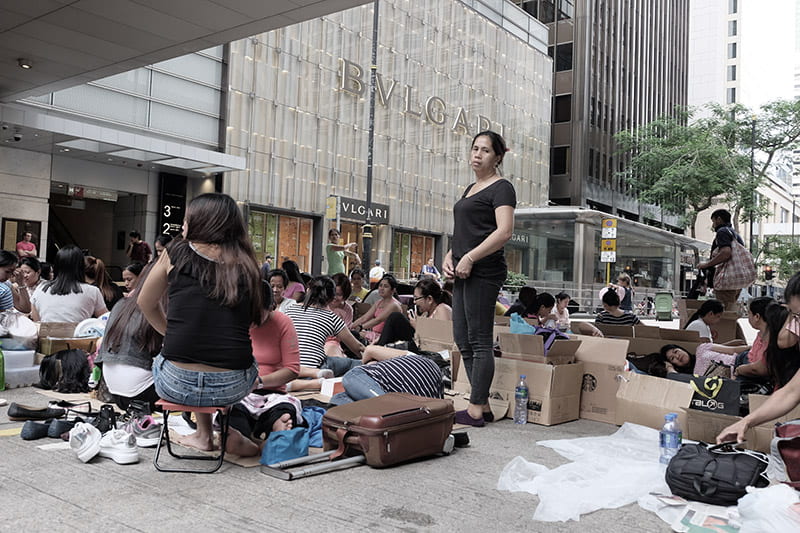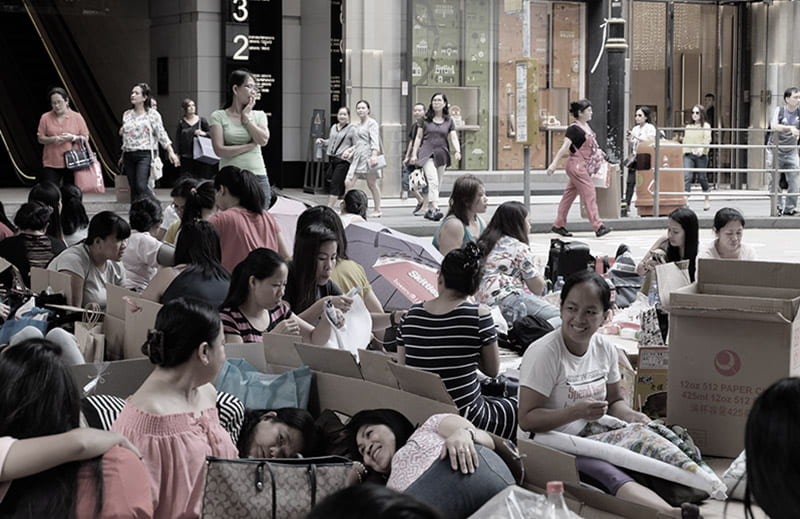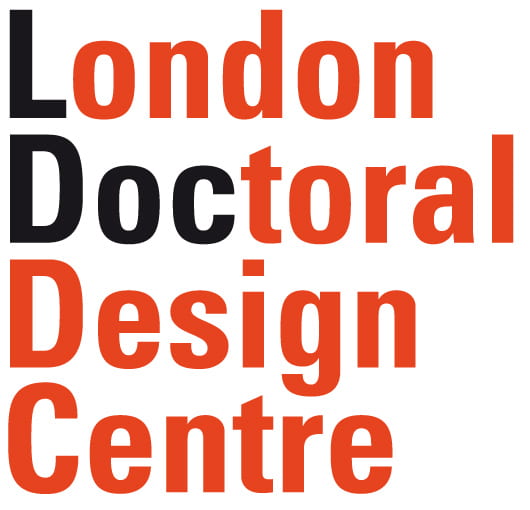The high desirability and scarcity of urban spaces often lets its usages be fluid, layered and multi-faceted. In Hong Kong the area next to the central station (streets, pavements and parts of the station) transforms every Sunday and on public holidays into a maze of cardboards accommodating hundreds of mainly female Filipinos and Indonesian workers. Hong Kong is one of world’s most densely populated cities, the migrant domestic aids make up for almost 5% of its total population. Most of them live in appalling conditions, with‘live in’and‘two weeks’rules, they often sleep in the kitchen or the bathroom and have no private space for themselves. These migrant workers take over the area around Hong Kong’s Chater road, the posh financial district, on Sundays and on public holidays. Cardboards, plastics mats and tents are laid down. The otherwise anonymous and chic borough is claimed and transformed drastically into a venue for picnicking, chatting, holding protests, choreographing, singing, hair cutting and bridal shower.

Since 1980s the migrant workers have been claiming the public space in this way. In 1992, a group of local residents tried to ban them from this practice, resulting in “the Battle of Chater Road” where a fierce public debate was fought in newspaper editorials. The sympathy and support for the migrant workers resulted in the eventual denial of the petition. Almost 40 yrs. since then, these gatherings today form a part of Hong Kong’s identity as a city. It is an interesting phenomenon where the public space is used to demonstratively live out the private. The social and legal conditions of the domestic workers in Hong Kong has long been in critic. By this public congregation the migrant workers flaunt themselves as a vivid part of the city which otherwise prefers to have them invisible following the ‘live in’rule or deport them immediately “two weeks rule” when they are no more in service. Showing us how the public space, as Jürgen Schiewe writes, could be used for a “reactive corrective function, which is consisted in the demand that state power be controlled and arbitrary exercise of power be exposed, made public and eliminated by disclosing their illegitimacy.”

In his later writings the sociologist Zygmunt Baumann coined the term liquid modernity to describe the post-modern. Liquid modernity describes the condition of constant mobility and change he sees in relationships, identities, and global economics within contemporary society. Instead of referring to modernity and postmodernity, Bauman writes of a transition from solid modernity to a more liquid form of social life. …. The above example from Hong Kong is one of the many that urban spaces stage throughout the world.
